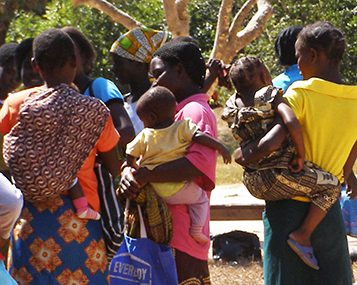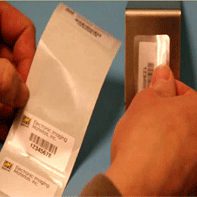Scientific Study Labels – A Case Study
“Research is what I’m doing when I don’t know what I’m doing.” – Wernher Von Braun

Among all the research being done in the world, some very important work is performed right in our neck of the woods, that is― in New England. The work the university’s Center for Global Health & Development (CGHD) is doing is outstanding and without it, we wouldn’t be making important advancements in research to ensure the health and survival of newborns in Zambia, a country in southern Africa.
Per our contacts with the CGHD at the university:
Worldwide, each year nearly four million children die before they reach only four weeks of age and 1/3rd of those deaths are due to infection. In particular, contamination of a baby’s umbilical stump poses a significant risk of illness and death, especially among home births which are common in rural Zambia. To prevent this type of infection, we need to go back to where it typically begins―in the household. When the mother gives birth at home, the risk of contamination to the umbilical stump poses a major issue.
Since November 2009, the CGHD has been working in partnership with the Zambia Ministry of Health to implement the Zambia Chlorhexidine Application Trial (ZamCAT). Researchers hypothesize that in order to effectively reduce the amount of neonatal infection and mortality, action needs to be taken immediately after birth. The aim of their study is to demonstrate whether a simple antiseptic wash, applied to the umbilical stump of newborns, will reduce infection and improve the survival rates of Zambian infants!
Enrollment of study subjects is now well underway and currently, about 42,000 pregnant Zambian women are being recruited for the study. Half of them will use a topical antiseptic wash daily for a period of one week to ten days after giving birth. The other half will care for their newborns as they have for ages based on the standard practice of “dry stump” care. This study seeks to determine whether or not local health workers and the mothers themselves can implement this home-based care in a rural African setting where neonatal mortality rates are highest.
Since this program was launched, the researchers have worked to identify community-specific behaviors and practices related to cord care through discussions and in-depth interviews in the Southern Province of Zambia, where the trial is taking place. The results of those discussions and interviews helped in the design and implementation of a culturally-acceptable intervention process.
The goal of this study is to provide a simple proven method to reduce newborn mortality. Similar research in Nepal found that the newborn mortality rate was reduced by 25% and up to 34% in children who had the first antiseptic wash within 24 hours of their birth. The intervention—which costs only pennies—would be an affordable, effective method to protect delicate newborns in their first four weeks of life in Zambia and has the potential to be applied in other areas of the developing world!

Electronic Imaging Materials, Inc. provides The Center for Global Health & Development with a unique scientific study labels system to fit their study’s design. For their first order, we supplied pre-printed sequentially numbered labels in “clusters” of 90 labels where each cluster corresponds with 380 mothers who took part in the study and where each mother had sets of 15 labels specifically assigned to her. That’s over 500,000 labels!” Recently, their order needs for this “cluster randomized control trial” have doubled as they expand their research and continue gathering valuable data on this life-changing work.
Our labels provide the thorough organization needed when this much raw data is acquired and must be retained in a very specific order and fashion. When it comes to data collection―in any type of study―it’s imperative that the data be managed correctly and with extreme care. As is often said in the research world “wrong data is bad data and bad data is no data” – simply stating the importance of being painstakingly cautious when handling data. By implementing a labeling system, these researchers are able to better track and manage the massive amount of data they deal with on a day-to-day basis for thousands of mothers and children.
Being able to provide them with scientific study labels that come with a certain peace of mind and make their lives a bit easier is what EIM is so glad to accomplish here. We are just blown away with the incredible work being done by CGHD and everyone involved, and we are truly grateful for their dedication to what they love. They are an inspiration to us all!




